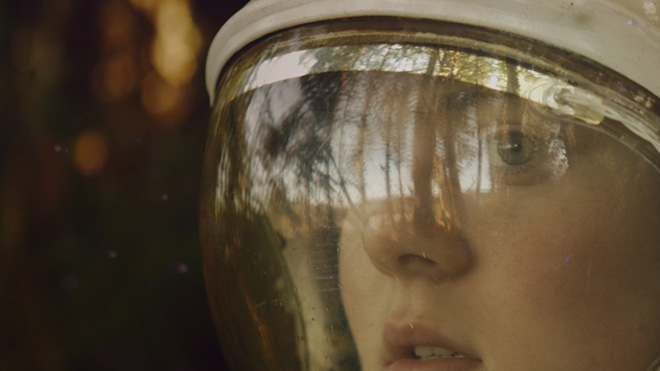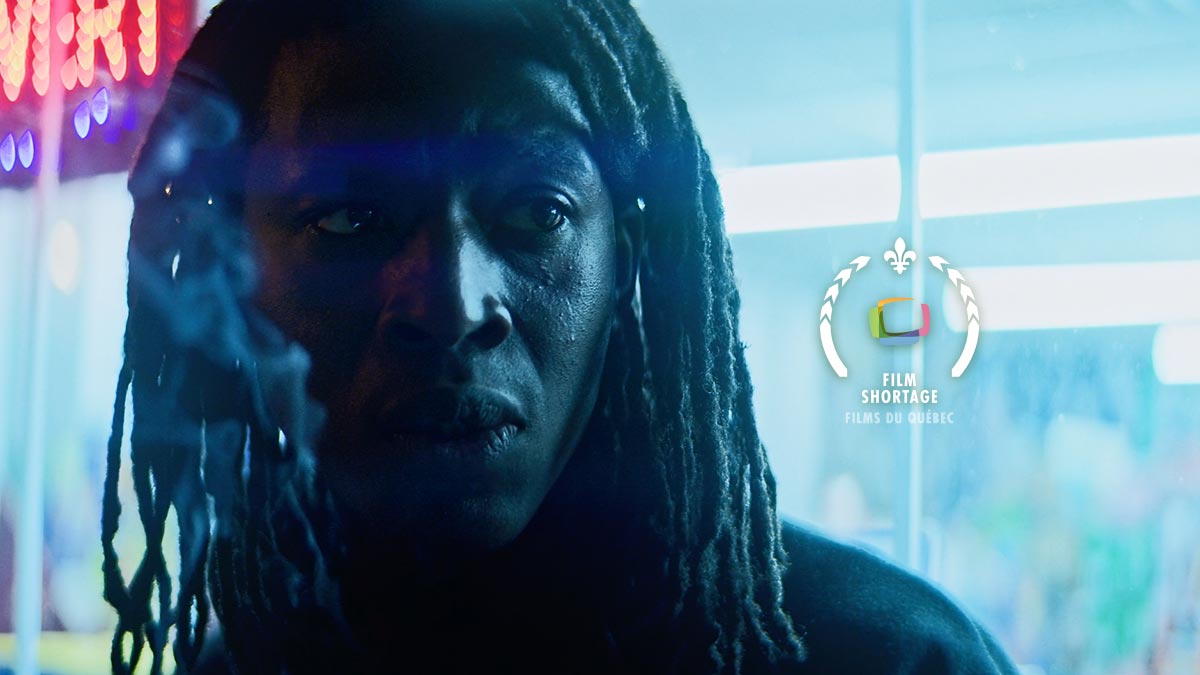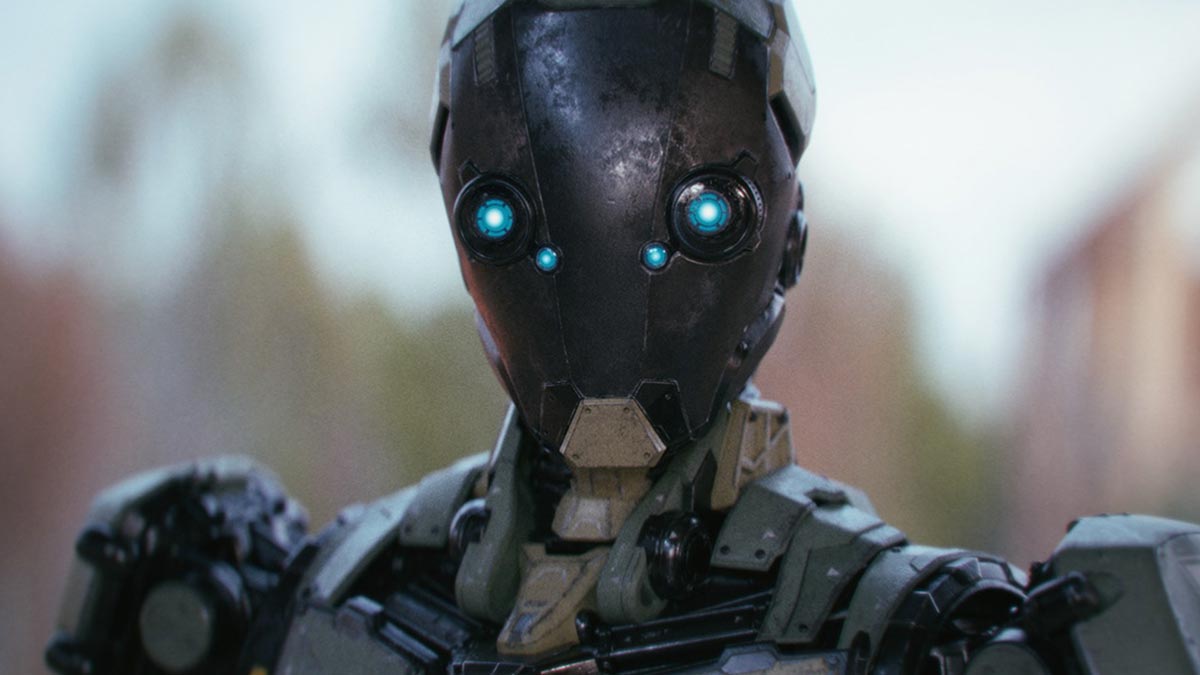A woman walks across a ravaged, post apocalyptic, infected wasteland in search of the final remnants of civilization
Blending fantasy, sci-fi, and action into a striking 45-minute epic, Anareta follows a determined woman as she treks across a ravaged, post-apocalyptic wasteland in search of humanity’s final stronghold. With civilization reduced to shadows and infection spreading like wildfire, the film plunges viewers into a hostile world where myth and survival intertwine. Starring Jessica Olim, Anareta is a visceral journey through desolation, danger, and the lingering hope for redemption.
Written, produced, and directed by Daniel Boocock—whose previous work The Neolith earned a spot among Film Shortage’s Top Shorts of 2020—Anareta marks a bold return to his signature cinematic world-building. Merging pulse-pounding action with atmospheric storytelling, Boocock crafts a richly imagined odyssey that explores resilience, memory, and the primal need to find connection in even the darkest of landscapes.
Anareta drops us into a visually striking and intense world—what inspired the concept and setting of the film?
The actual idea for Anareta was taken from many different walks of life which have happened over the past 5 years or so along with aspects of my own imagination, influences & creativity. I’ve always wanted to do a post-apocalyptic / dystopian type idea as I quite like the thought of what can be created within a world like that in terms of aesthetic, metaphor, parallels and potential conflicts. Visually speaking I’ve always liked films that have a spectacle and substance feel. You get your money’s worth when you watch them. It’s become my mantra as I always tend to push for something similar, at least as far as the means I have will let me. Anareta has a ‘big-film’ feel but in a short. It’s a ‘big short’ with a kind of futurist, post-industrial, ran down, brutal, dystopian decay kind of look. You see similar aesthetics in films like Alien 1 & 2, the first two Terminators, the original Blade Runner & films like that. But as implied there’s layers going on underneath the texture of the visuals. They’re even in the Anareta title which came from old Greek tarot / astrology which means a malefic or destroying planet.
The film follows a lone woman navigating this post-apocalyptic wasteland. What was important to you in developing her character?
In a situation like that what does one do? I suppose there’s no way to say for sure. I’ve read stories on people in horrendous types of situations and depravity and even then, in all the madness and chaos, with all the risks involved, no matter what was going on, there would tend to be these occasional small little incidents of someone doing something good or kind no matter how insignificant it may have seemed…or how much it would have cost that person if caught. From the star Enola (the lone woman) was always meant to be a little bit of light left in an immensity of dark, regardless of what was going to happen to her. It’s one of the first things I said to Jess (who played her) who portrayed that vibe pretty well. Her little spark is passed on to some of the other characters which comes around full circle at the end.
The world feels both ravaged and hauntingly beautiful. How did you approach the cinematography to capture that balance?
That was very much what we were aiming for. That spooky, cool, melancholic, captivating look. I decided to shoot on wide lenses, with a mini LF in full frame during winter. It was the best way to bring Anareta to life given the world in which it was set. I was lucky in terms of making some deals for kit. Most of the film was shot on a 15mm Signature prime. An 18mm & 21mm were also used but the 15mm was the main lens. For the NYC scene we had an Arri hero lens which was great, I think that was a 57mm on a few close ups. You see the bokeh more when using that. Most of the shots were either done on a Ronin or handheld. The NYC scene was done on a Steadicam. I’d talk to the camera team about the moves I wanted for each shot either beforehand or on the spot and we’d just try it. There was no real prep, we had hardly any lights and it was virtually pitch black by 4pm so I knew we’d be up against it, sometimes it was smash & grab, but given the circumstances, most of it packs the cinematic punch I wanted. The guys done pretty well. In the colour grade it was a case of bringing the best out of that wintery cold, sickly look for the post-apocalyptic scenes. I wanted a bit of blue and a silvery grey monochromatic hint. Dan (the gradist) added a bit of subtle teal to certain scenes too & we desaturated everything to an extent & worked any noise out of the image. For NYC we pushed the colours harder so they would have more of a ‘pop’ compared with the rest of the film.
The film has a strong mix of action, sci-fi, and fantasy elements. How did you ensure these genres blended seamlessly?
I love those genres individually but even more so when they all borrow from each other & fuse together. I knew what I wanted from the get go with Anareta & was careful not to fall into certain generic pitfalls or overly familiar trappings. I also stayed well away from the Zombie B Movie or comedic feel. The films I mentioned earlier made a big impression on me and blend different generic elements together and make it all work. Anareta does the same though it is partly experimental at times. There are familiar enough elements for an audience to absorb which sit on the surface. Then there’s what’s underneath those initial layers which leaves a bit of an aftertaste or something to ponder. It’s a nice mix that works which was further refined when I edited it.
The sound design and score play a major role in creating atmosphere. Can you talk about your approach to sound in the film?
Sonically I wanted to make things sound as haunting and atmospheric as possible with a sense of dread. Sometimes Anareta has quite a sparse sensibility, ghostly even, wilderness-like. Then there is the darker void type post-industrial, metallic clangy sounds. There is an actual void montage sequence towards the latter stages of the film too which has a cosmic horror sound / feel to it. Obviously, we upped the ante at times to enhance certain sequences for an audience. Other times we ‘d pull back & make things more minimal but the threat of something about to potentially happen is always there in terms of sound design. Sam (sound designer) is good at what he does, he’s done all my films. We could have done even more, provided the time and money was there to do so but we took it as far as we could given the dynamics.
The score fills everything out. I sent some references over to Vinnie (the composer) who actually makes an appearance in the film (the bad guy cannibal with the beard). Again, the aim was to focus on atmospherics more than conventional type instrumentals. Because he was also on set a few times he got a sense of things by being there and looking around. After that he went off to create a lot of tracks. I think around 6 or 7 are in the actual film with 1 track being the predominant score. His work really did but the meat on the bones and fill things out sonically.
There are hints of a larger mythology at play. Is this world something you see expanding beyond this short film?
For sure provided there’s a chance to do so. It’s certainly good enough in my opinion. What you’ve seen is just the tip of the iceberg in terms of vision, I’ve said this before but if this is what can be done now with not much of a setup, ducking & diving, cutting corners, rushing, relying on favours, having to settle at times rather than getting what you know can be got then imagine what can be achieved with more of a setup. It’s obvious. Anareta would hit the mark & give some of the big guns a run for their money. But it’s going to take more than just me banging on the door. Those who are already ‘there’ somewhat, in various types of positions in the business, are going to basically have to look at me & my work and say yes. They don’t seem to do that as much these days for the up and comers unless one is usually connected. Regardless I just hope the film game in general gets back to focusing on real talent and making good stuff as I think the overall direction it’s been heading over the past 5 years is actually hurting it. There’s a huge drop off in terms of overall quality. Whether that’s down to certain business dynamics or other matters who can say for sure, I suspect it’s a mixture of everything. But I do see audiences largely wanting quality to return. They seem fatigued with what they are watching these days for the most part. Whether it’s in the cinema or at home.
What were the biggest challenges in bringing this post-apocalyptic landscape to life, both visually and logistically?
Finding places that could visually fit the idea was hard as most of the kind of places I was looking for were in the process of being demolished. It was difficult to find ones that had a decay kind of feel to them which could fill the frame with different layers of depth. I like shots that have natural hints of almost a 3D or 4D feel to them especially when shooting wide. Complex camera moves where also used most of the time, so to further enhance that style, its great if a specific type of location has a 360 degree feel to it to fill everything in the shot. It gives the viewer more to look at. I did eventually find some locations which were great. You couldn’t beat them or design better ones even if you had millions. But we only had so much money & time so things were massively overstretched in terms of what I could get in them. I remember the first day in the big decommissioned power plant, we arrived the night before & there was a hurricane happening out at sea which was heading straight for us. I got a call from the guy in charge of the facility who said if the weather doesn’t die down the shoots off because the big turbines in the plant where still connected to the sea & would flood the basement level. Never mind their being no power, working lifts or part of the roof being damaged etc. Luckily the weather calmed down to an extent through the night. A few of us kept that phone call to ourselves but it was a long night as I wouldn’t have been able to get the kit again & would have lost most of the money which had been spent. Another time when we were going up into the quarry towards the originally planned shooting spots the roads were iced over & other people & vehicles were stranded there. We turned back & filmed in another part instead but it was done on the fly. There were so many incidents like that. Any delay, glitch or bad apple in terms of personnel would have been a disaster, it almost was at times, certain people & the schedule had to be switched around. There are always problems making films but you don’t need unnecessary problems on top of problems especially when the margins are spread thin. It was a tightrope with no safety net but I went for it regardless. It was a big adrenaline rush looking back but probably a little too close to the bone in terms of setup for such a big idea. I learnt a lot as I was constantly figuring things out throughout the entire process.
Your previous film The Neolith had a similarly rich and immersive world—how does Anareta build upon or differ from that experience?
For me it does a bit of both, it builds on what I’m doing in terms of style and atmosphere, yet Anareta also differs in the type of world where it’s set…or are both shorts somehow linked in some strange way? It doesn’t necessarily need to be defined but they both reflect on some of the good and bad sides of humanity. The themes involved you could say are related. Both projects take you back to the ‘past’ (allegedly) yet also take you forward to a potential ‘future’ somewhat as well. Certain dynamics & behaviours in people are eternal.
What are the books, podcasts or even YouTube Channel that you recommend young filmmakers to get their hands on?
They need to get their hands on what they actually need to undertake making something more than anything else. Film shortage is good, there’s retrospective of Jupiter & beyond the short which are handy to have a look at some shorts & different styles or ways of making things. But ultimately if someone is going to have a crack at something then they need to band together with whoever they can & begin. They should find their own niche or style. Even if they start small on their phone. It’s the first step where one can learn a lot. It is such a climb though with many moving parts, different types of costs & difficult dynamics to navigate.
Can you share with us some of your favorite short films you’ve seen lately?
I don’t watch as many of them now as I used too. I’ve seen too many which tend to be way too samey for the most part in terms of filmmaking techniques. For me the vast majority of them usually end up playing to ‘type’ to supposedly fit in. It’s very rare to see one that’s really trying to do something imaginative, inspiring or worth watching, those types of shorts are out there, but few & far between…I’d say check out The Neolith, Rip & Run and Anareta!




